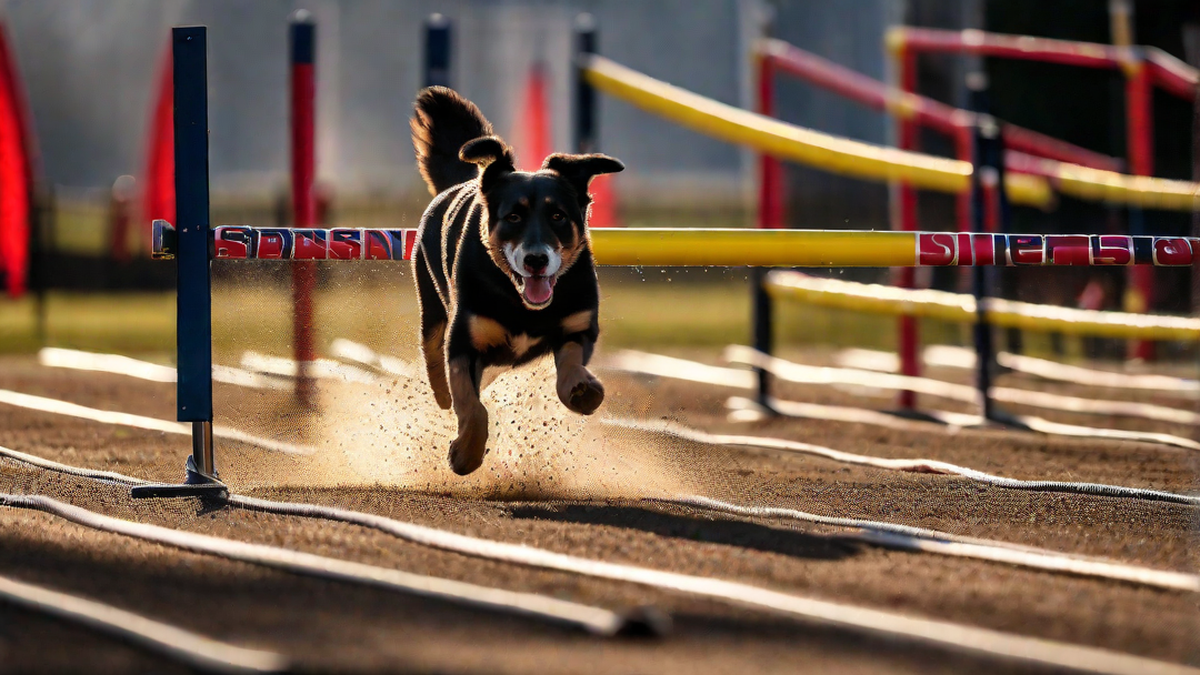Training running contacts in dog agility can be a challenging but highly rewarding endeavor. As an avid dog agility enthusiast, I have spent countless hours perfecting my dog’s running contacts. In this article, I will share my personal insights and techniques on how to train running contacts in dog agility.
Understanding Running Contacts
Running contacts refer to the technique where a dog maintains full speed while running over contact obstacles such as the A-frame, dog walk, and seesaw. This technique requires precise footwork and coordination between the handler and the dog. The goal is to ensure that the dog hits the contact zones (usually painted areas) with at least one paw while maintaining their momentum.
Training running contacts is crucial for saving time on the agility course and reducing the risk of injury to both the dog and the handler. It requires consistent and focused training, as well as a strong bond between the handler and the dog.
Setting Up Your Training Area
Before starting the training, it is essential to set up a dedicated training area. This area should be large enough to accommodate the agility equipment, including the contact obstacles. Ensure that the training area is safe and free from any distractions that may hinder your dog’s focus.
I recommend using rubberized contact equipment surfaces to provide better traction for your dog’s paws. This will help them maintain stability and confidence while executing the running contacts.
Foundation Training
Before diving into running contacts, it is crucial to establish a solid foundation in basic agility skills. Your dog should be familiar with commands such as “sit,” “stay,” and “come.” They should also have a good understanding of obstacle discrimination and handling cues.
Work on strengthening your dog’s understanding of verbal and visual cues, as these will be important in guiding them through the running contacts. Practice these foundation skills consistently before progressing to the next steps.
Introducing the Contact Obstacles
Once your dog has a strong foundation in basic agility skills, it’s time to introduce the contact obstacles. Start by allowing your dog to explore the contact obstacles, such as the A-frame, dog walk, and seesaw, without any pressure or expectations. Let them sniff, walk on, and play near the obstacles to build positive associations.
Gradually introduce commands and reward-based training to encourage your dog to walk over the contact obstacles with all four paws. Use treats or toys as a reward for successful performances. Remember to reinforce positive behavior consistently and praise your dog for their efforts.
Shaping Running Contacts
Once your dog is comfortable with basic contact obstacle performance, it’s time to shape their running contacts. Start by setting up a low-height contact obstacle and guide your dog through it using verbal and visual cues. Initially, you may need to slow down and walk beside your dog to ensure they hit the contact zone with at least one paw.
Gradually increase the speed and distance between you and your dog. Encourage them to maintain their momentum and hit the contact zone with precision. You can use target training, such as placing a mat or a colored tape on the contact zone, to help your dog understand the desired behavior.
Remember to break down the training process into small steps and provide plenty of positive reinforcement. Consistency is key, so practice regularly and gradually increase the difficulty level as your dog becomes more proficient.
Troubleshooting and Fine-tuning
During the training process, you may encounter challenges and setbacks. It’s important to remain patient and adapt your training methods accordingly. Pay close attention to your dog’s body language and adjust your approach if needed.
If your dog consistently misses the contact zones, consider going back to foundation training and reinforcing their understanding of basic commands. If they struggle with maintaining speed, work on building their confidence and motivation through play and rewards.
Conclusion
Training running contacts in dog agility requires dedication, patience, and a deep understanding of your dog’s abilities and needs. By following the steps outlined in this article and personalizing your training approach, you can help your dog achieve efficient and reliable running contacts on the agility course.
Remember, every dog is unique, and training progress may vary. Tailor your training methods to suit your dog’s individual needs and always prioritize their safety and well-being. With consistent training and positive reinforcement, you and your dog can conquer the running contacts in dog agility!

